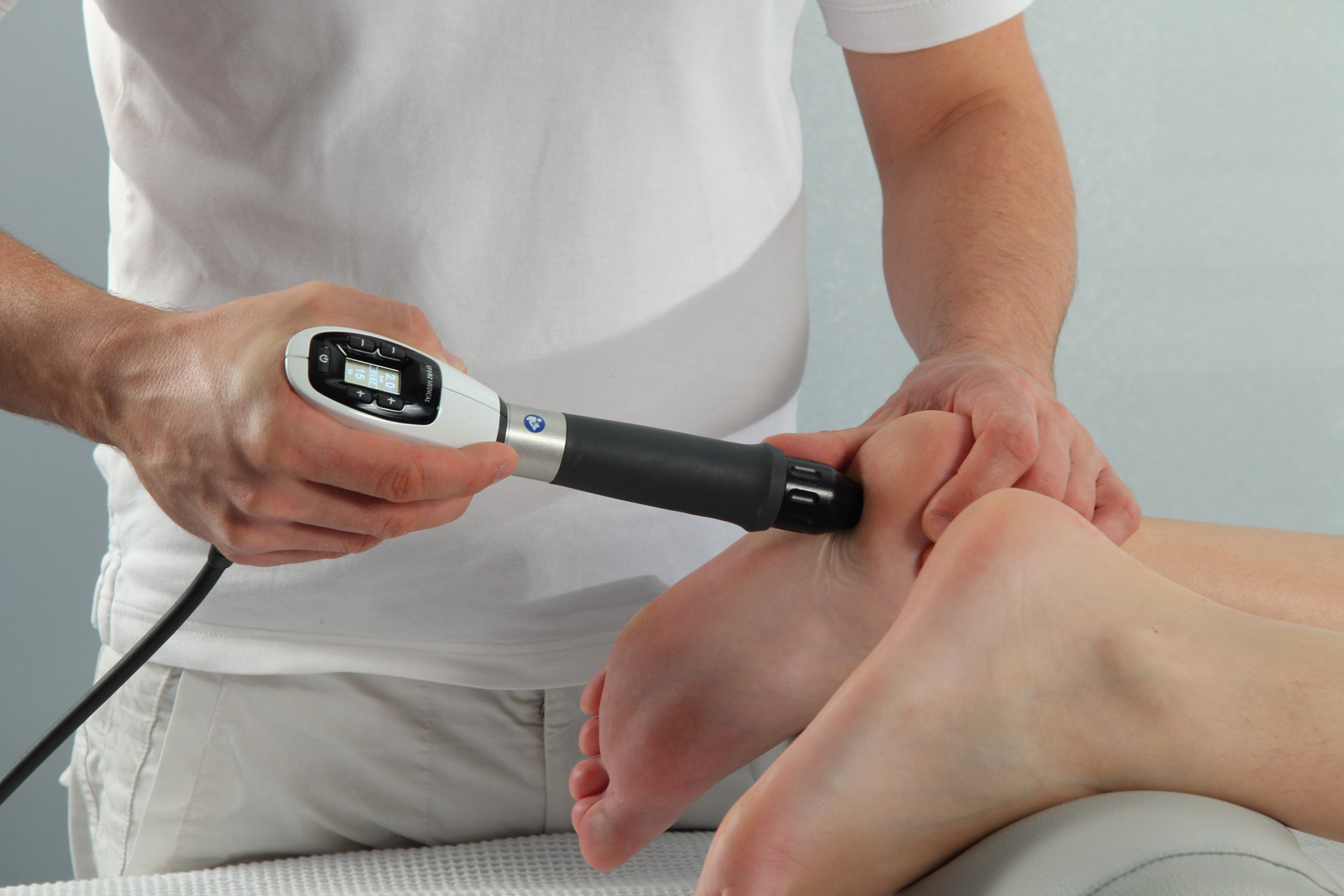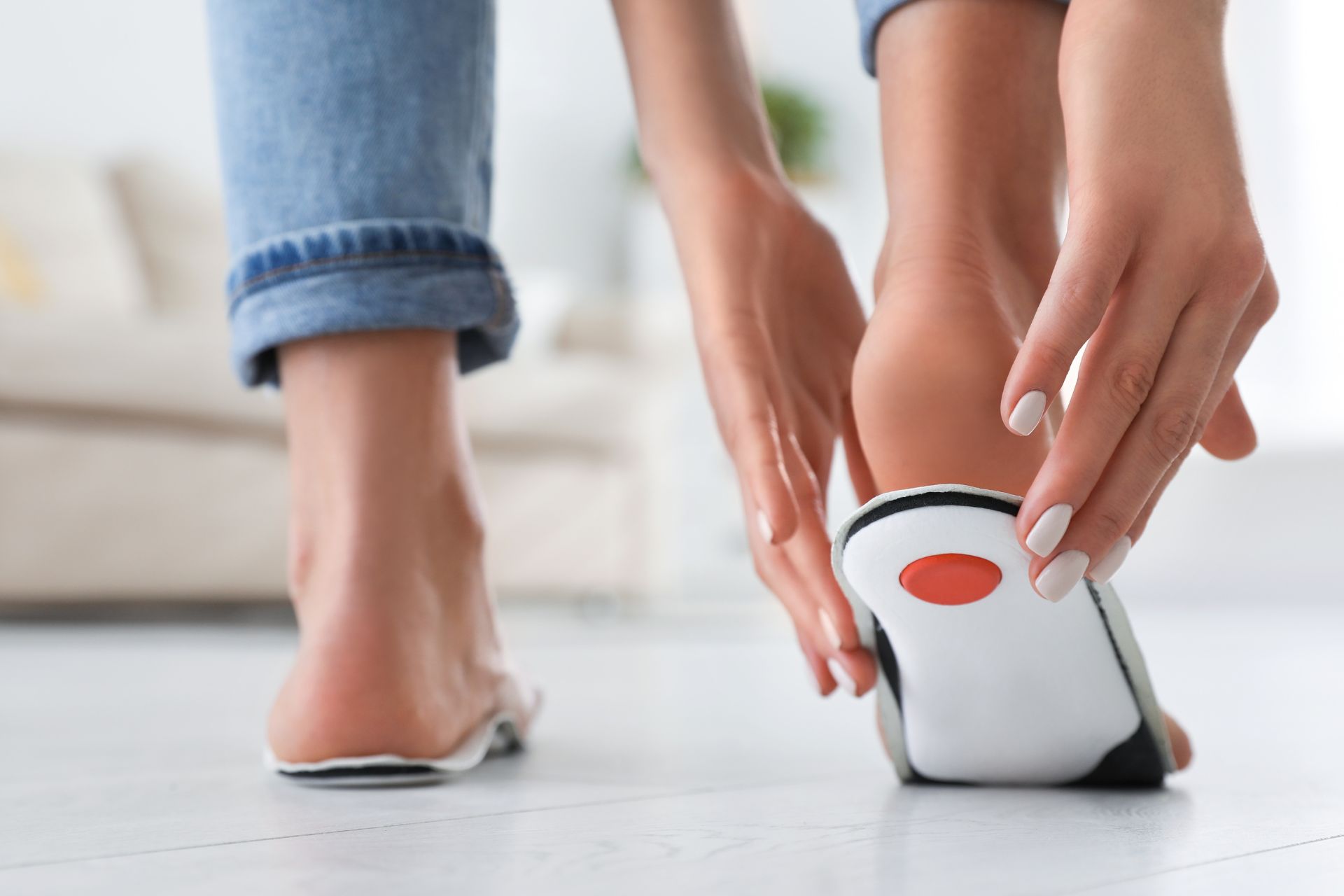Radial Shockwave Therapy for Plantar Fasciitis and Foot Pain
Radial shockwave therapy relieves lingering heel and foot pain that can become chronic when left untreated. Being non-invasive, the wave energy generated by the technology is directed at an area of pain from outside the body, hence “extracorporeal”.
A shockwave therapy machine delivers waves from outside the body to trigger the body’s repair mechanisms to increase the rate of soft-tissue healing of tendinopathy (also known as tendinitis or tendonitis) disorders that result in pain, swelling or impaired function exacerbated by. Shockwave therapy for plantar fasciitis, for example, relieves pain from the simple act of walking or more intensive activities like running.
How Does Shockwave Therapy Work Exactly?
First, we have to understand the underlying sensitivities of pain as four main processes: transduction, transmission, modulation, and perception. The shockwave therapy machine works by transduction, whereby tissue-damaging stimuli activate nerve endings, transmitting the pain sensors to the brain.

Shockwave’s effect is based on the transduction of mechanical energy, which is transferred to cascade various biochemical processes in target tissues. Pressure, acoustic or sound waves over-stimulate pain transmission nerves, which can reduce sensitivity and pain, enhance blood circulation, restore through revascularization, and accelerate healing processes, letting the damaged tissues know to regenerate.
By reaching below the skin and into the deep reaches of the tissues where manual therapy or extracorporeal tools cannot, the technology helps tissues return to normal healing patterns while leaving the surrounding tissues unharmed.
What Does Shockwave Treat?
Shockwave therapy treats various conditions throughout the body, from head to big toe.
Chronic tendon, ligament or fascia injuries don’t typically heal independently. Most people learn about shockwave therapy after experiencing chronic pain in the lower extremities due to overuse, strain or inflammation on the plantar fascia ligament that connects the heel to the toes or plantar fasciitis.
Typically, surgery removes the damaged portion and joins the uninjured parts back together. However, the basic idea with shockwave therapy is that it allows these small plantar fascia tears in the plantar to heal, alleviating the need for surgical intervention.

The appeal of shockwave therapy lies in its ability to deliver rapid pain relief and rejuvenate mobility. It stands out for being non-surgical and non-invasive, freeing patients from the hassles of post-operative care. The therapy also sidesteps the need for pain medications, further hastening recovery. It’s a versatile solution, addressing various issues stemming from chronic and acute pain, making healing faster and smoother.
If methods like massage, injections or traditional physiotherapy haven’t eased your discomfort, shockwave therapy could be the game-changer you need for foot pain relief. This technique can be potent when paired with other modalities, such as plantar fasciitis insoles and targeted stretching exercises, offering a comprehensive approach to managing and alleviating your condition effectively.
Leading Technology and Equipment to Treat Injuries
Possibly, the most widespread claim that is incorrect is that all acoustic wave, pressure, or radial shockwave therapy machines are the same. This is simply a false statement.
And why is that? A real “shockwave” travels faster than the speed of sound at more than 1,500 meters per second. But don’t get worried by the speed because the energy is safely delivered to a focal point where the blood vessel and soft tissue degeneration have occurred to speed the healing regenerative process.

At The Foot Practice, your safety and the effectiveness of our modalities to manage your condition are paramount. We are committed to ensuring that every patient receives care of the highest calibre. Using lower-grade equipment can exacerbate an injury rather than heal it. That’s why we are dedicated to utilizing only top-tier, cutting-edge equipment from Storz Medical, ensuring every patient is afforded the best opportunity for a swift and comprehensive recovery.
MAKE AN APPOINTMENT
Is There a Difference Between Shockwave and Ultrasound Therapy
Although focused shockwaves are similar to ultrasound, significant differences do exist. Focused shockwaves have substantially higher pressure amplitudes, meaning steepening effects resulting from non-linearities in the propagation medium (e.g. human tissue) must be considered.
Another difference is that most ultrasound waves are periodic oscillations with narrow bandwidths. In contrast, focused shockwaves are characterized by a single, primarily positive-pressure pulse followed by a comparatively small tensile wave component.
The characteristics of shockwave and ultrasound waves are different. Ultrasound exerts a high-frequency alternating load on the tissue in the frequency range of several megahertz, which leads to heating, tissue tears and cavitation at high amplitudes.

The effect of focused shockwaves is determined, among other factors, by a dynamic forward-directed impact (in the direction of acoustic pressure wave propagation), which causes a pulse to be transmitted to the interface. The dynamic effect can be increased so that even kidney stones can be destroyed.
The non-invasive shockwave treatment dates back to the 1960s when the idea emerged to generate shockwaves extracorporeally and then transmit them into the body to disintegrate kidney stones and gallstones without damage to the surrounding tissue passed by the acoustic waves on their way to the target area. Since then, the waves of medical evidence that support using shockwave as a modality in many medical disciplines and applications have increased in scope.
As a result, shockwaves are ideal for creating effects in deep tissue without interfering with the tissues located along the propagation path. So essentially, shockwave therapy enables targeted management of the condition within a confined area, resulting in increased blood circulation and metabolic activity, leading to the onset of the healing process.
What To Expect During and Following a Session
If you compare shockwave therapy for plantar fasciitis or other foot conditions with, let’s say, surgery, the sessions have minimal side effects. Recovery time is also shortened.
It’s common to feel slight discomfort during and shortly after the therapy, but rest assured, it’s a normal part of the process. Most patients report immediate pain relief following the session, making it a practical option for managing plantar fasciitis discomfort.
However, within 2–4 hours after the session, you may experience some soreness in the treated area. This soreness has been reported as tolerable and not limiting. Minor skin bruising, swelling in the treated area, or redness may be other common side effects. But these typically disappear or resolve within a few days. But unlike surgery, no anaesthesia or pain medications are given during the session, so come as you are.
Battling plantar fasciitis, jumper’s knee, heel spurs, insertional pain, chronic tendinopathy, medial tibial stress syndrome, calcifications or hip pains? Don’t suffer in silence.
Schedule your appointment for shockwave therapy in Singapore and take the first step towards personalised, effective management of your foot condition.






